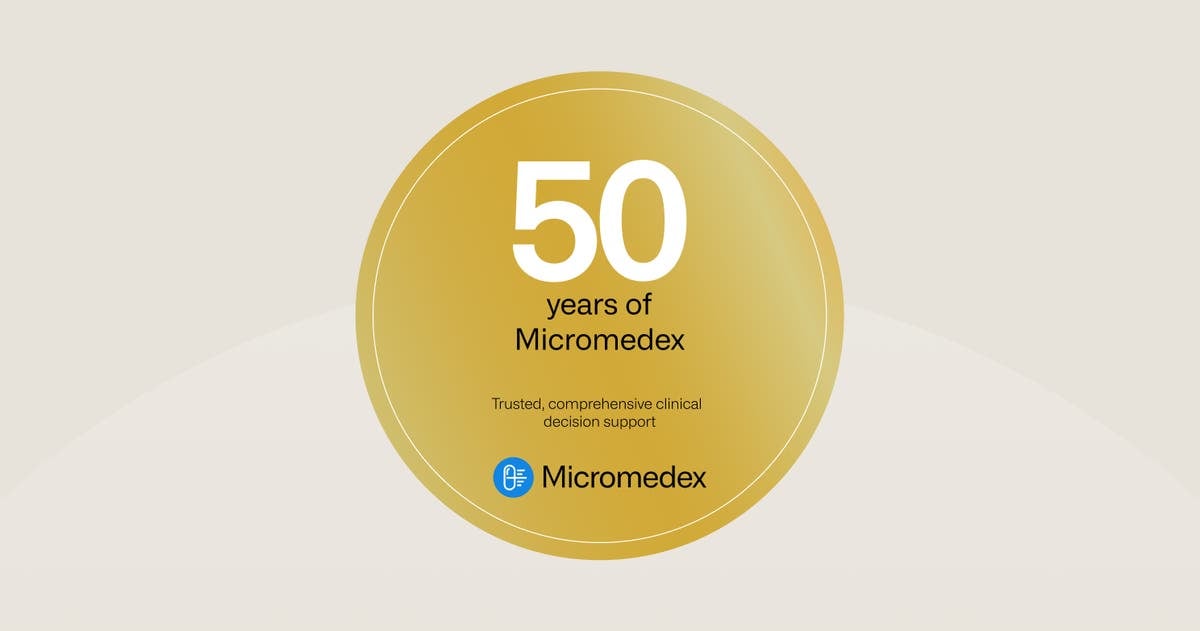The cost of patient safety: 3 considerations for hospital leadership on clinical decision support investments

Clinical decision support systems come at a cost, but of course are critical to patient safety. We outline three critical considerations for hospital leaders when making investment decisions
Access to the right information at the right time is crucial to safe and effective patient care, and hospitals are complex systems with different healthcare professionals requiring specific clinical evidence to support patient-specific decisions.
What’s more, hospitals around the world are facing unprecedented challenges in terms of aging patient populations, staffing shortages and clinician burnout. These burdens are exacerbating financial pressures and accelerating the need for technology in the workflow to support efficient and safe care.
Electronic clinical decision support systems (CDSS) are used by many hospitals worldwide to support high quality care, often through a paid subscription model. With hospital resources stretched, leadership teams have tough decisions to make when it comes to selecting CDSS tools.
We look at 3 considerations for hospital leadership when investing in CDSS solutions to support effective care, patient safety and system efficiency.
1. Evidence-based interventions help prevent medication errors
Reducing the risk of harm from medication errors is a high priority for hospitals, but it still accounts for more than half of the overall preventable harm in medical care globally,1 and causes greater mortality than traffic accidents, breast cancer or HIV.2
With evidence-based clinical decision support tools, especially when integrated directly within the workflow in the EHR, clinicians have real-time access to the latest information when prescribing, dispensing, and administering medications. Using technology to create automated alerts for potential medicine-related harm can make a significant impact on patient safety.
“After integrating Micromedex into our EHR, we are now able to review 96 percent of the prescriptions that we issue. By reviewing almost all prescriptions, we expect to see significant improvements in pharmacokinetics and pharmacodynamics, as well as a reduction in medication errors.”
– María Carolina Aguirre Navas, Chief Medical Information Officer, Hospital Internacional de Colombia
Adoption of a CDSS can help reduce unwarranted variation in care3 and is associated with a significant reduction in the hospital readmission rates.4 In fact, randomized controlled and observational studies have shown that CDSS-based interventions increase the proportion of patients that receive recommended care by 5%–10% on average.5
2. Medication validation at scale can prevent wastage and reduce cost
Medication-related harm represents a major financial burden on hospitals worldwide, with the global cost associated with medication errors estimated at $42 billion annually..6 Added to the financial cost of patient harm is the hidden cost of medication wastage. Polypharmacy can be a contributor to both patient harm and medication wastage, since when a patient takes multiple medications, they face a significantly higher risk from adverse events as well as loss of drug efficacy and treatment failure.7
With more efficient medication validation activities driven by CDSS tools, including helping to support medication reviews particularly in cases of polypharmacy, hospitals can prevent the wastage of valuable medication resources — reducing costs and helping to build an even more sustainable medication cycle.
“We can now process up to 160,000 prescriptions each month in each facility where Micromedex has been integrated. That’s a 5,300 percent increase — a scope that is only possible with this kind of digital transformation.”
– Antonio Dominguez Garza, Corporate Head of Pharmacy Informatics and Hospital Pharmacy, Christus Muguerza
3. Streamlined access to information supports efficiency gains
Healthcare data is growing exponentially; it is increasing at a rate of 47% per year,8 due in large part to the proliferation of patient-generated health data and the near universal use of EHR systems. With an influx of health data, medical literature is being published faster than ever before, and keeping up with the latest clinical evidence is becoming an increasingly difficult task.
When factoring in dozens of patients across a single shift, time spent searching for clinical information can quickly add up.
“Clinicians are under tremendous time pressure. It’s important to streamline efficiencies where you can — and keep clinicians inside the workflows they are used to using. If they need to go outside those workflows to find the information they need, that’s often a barrier to entry that may prevent them from getting it done.”
– Mark Weisman, MD, Chief Medical Information Officer at TidalHealth
By integrating CDSS into the clinical workflow in the EHR, hospitals can help their clinical staff to work more productively while strengthening patient safety, which is particularly relevant in an age of staff shortages and clinician burnout. CDSS can support digital technology such as automated alerts, which can help reduce human error whilst at the same time introducing efficiencies that free up time for quality care to be enhanced.9
What’s more, by consolidating CDSS vendors through a streamlined buying process, hospitals can reduce the overall cost of their subscriptions. DynaMedex is a prime example, seamlessly combining the clinical expertise and extensive, curated disease content of DynaMed with the depth and breadth of drug information of Micromedex in one single solution. This provides a suite of content and tools with comprehensive coverage for the entire care team with current, high-quality, and actionable evidence-based drug and disease content.
Conclusion
Accurate, timely evidence at the point of care is crucial for hospitals to support patient safety. Strategic investments in the right CDSS tools can not only help clinicians to avoid preventable harm, potentially reducing the cost implications of medication errors, but it can also support efficiencies in the hospital and help to prevent waste.
References
- https://www.who.int/europe/publications/m/item/key-facts-about-medication-errors-mes-in-the-who-european-region
- https://www.ncbi.nlm.nih.gov/books/NBK225187/
- https://academic.oup.com/jamia/article/30/6/1205/7087176
- https://www.sciencedirect.com/science/article/abs/pii/S0167923622000872
- https://www.bmj.com/content/370/bmj.m3216.abstract
- https://www.who.int/publications/i/item/9789240088887
- https://www.merative.com/blog/avoidable-harm-in-vulnerable-populations
- https://healthtechmagazine.net/article/2023/05/structured-vs-unstructured-data-in-healthcare-perfcon
- https://ecamet.eu/wp-content/uploads/2022/03/ECAMET-White-Paper-Call-to-Action-March-2022-v2.pdf
Related Articles

Merative names Sonika Mathur as General Manager for Micromedex
Effective today, 20 May 2024, Sonika Mathur will lead Micromedex, our trusted...
By Gerry McCarthy | 1 min. read

50 years of Micromedex – a celebration of our history
Since the mid 1970s, Micromedex has been a pioneer in evidence-based clinical...
By Merative | 7 min. read

Micromedex wins 2024 Black Book Market Research award, reinforcing a focus on client experience
Winning first place for Clinical Decision Support: Point of Care Clinical Reference...
By Merative | 3 min. read
Ready for a consultation?
Our team is ready to answer your questions. Let's make smarter health ecosystems, together.
